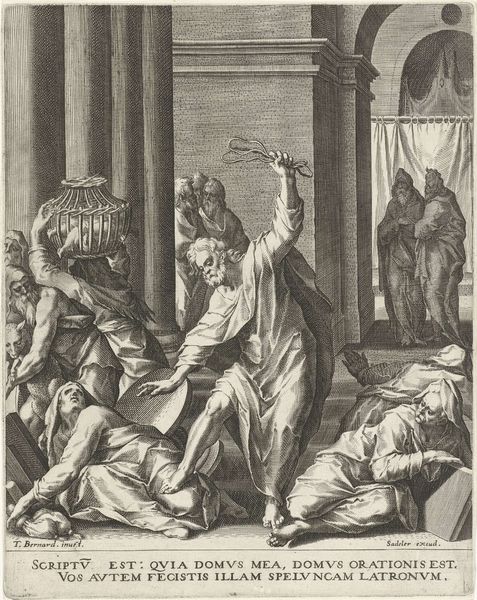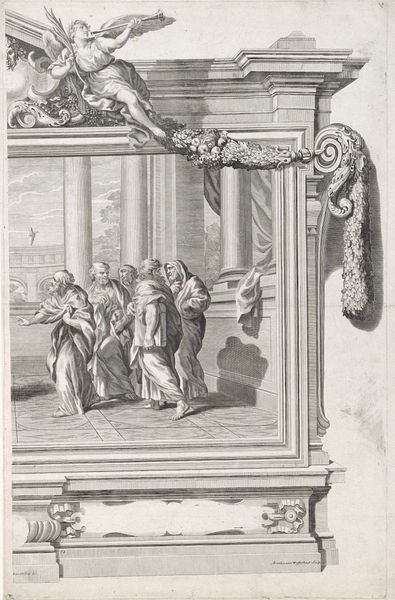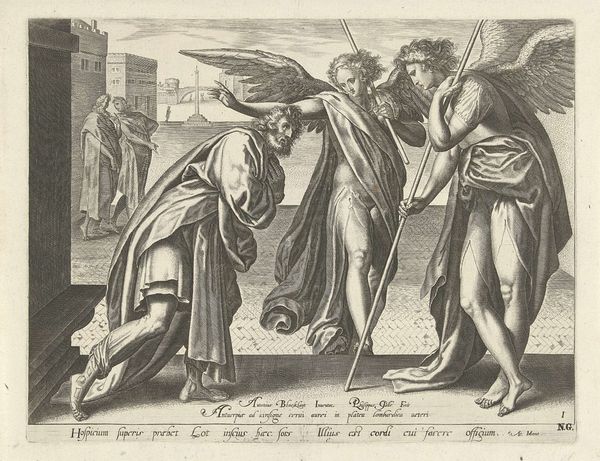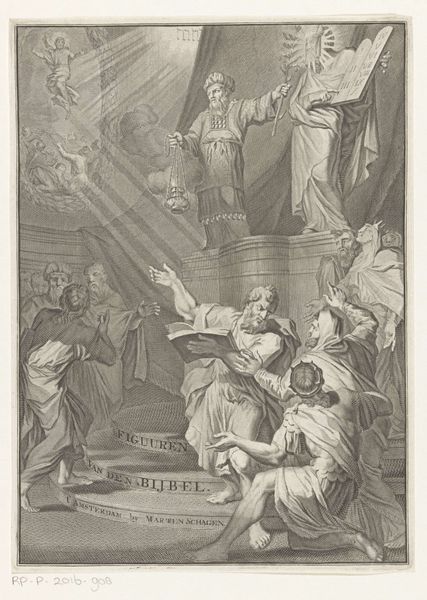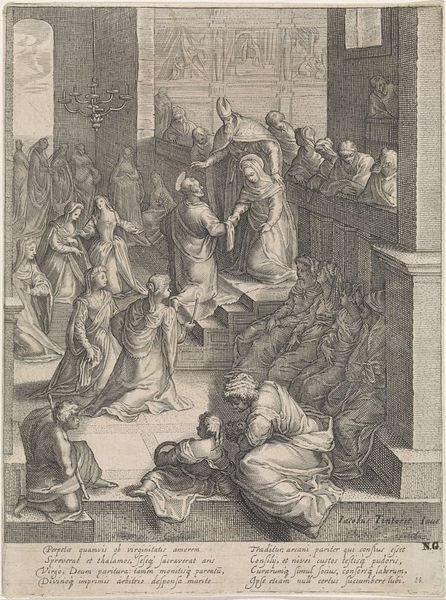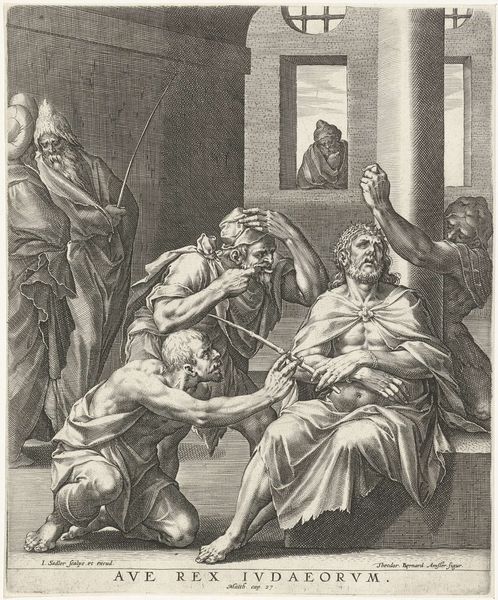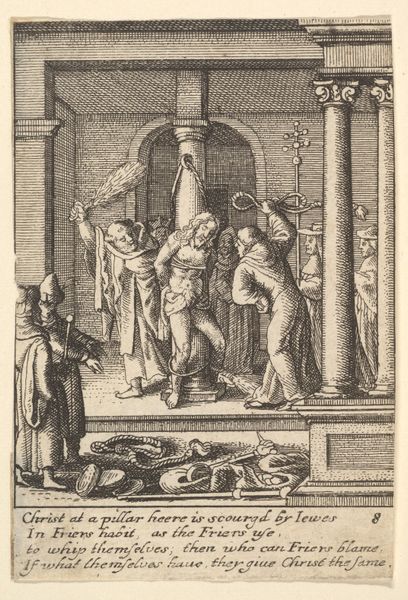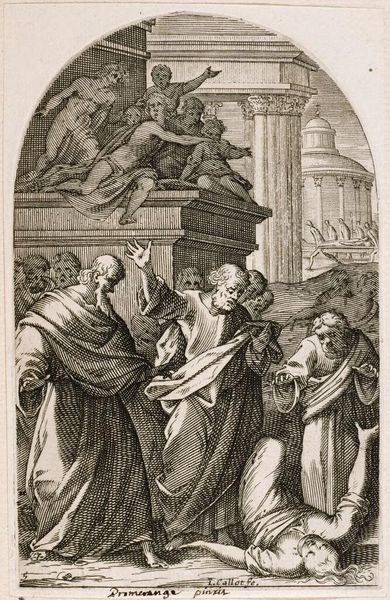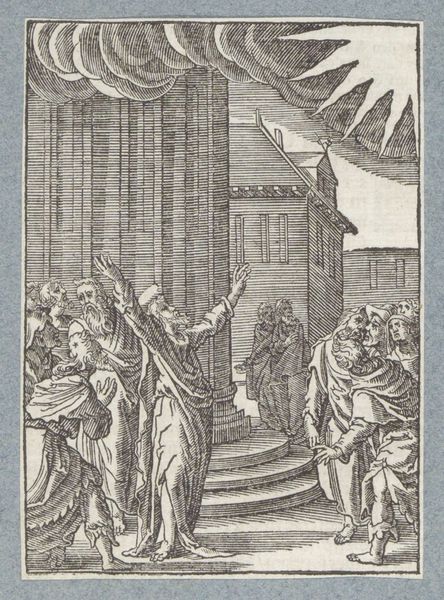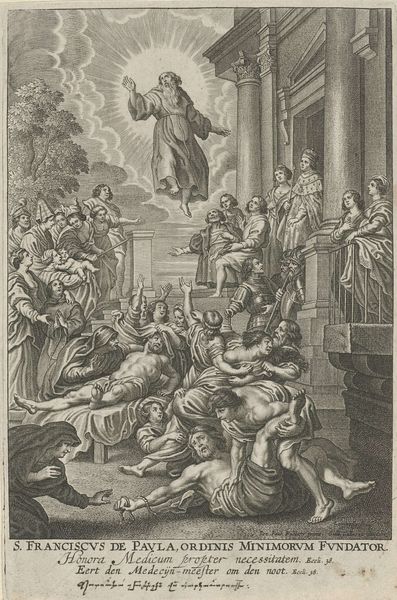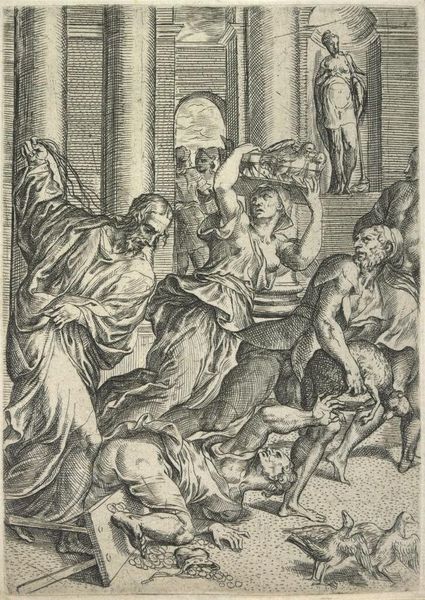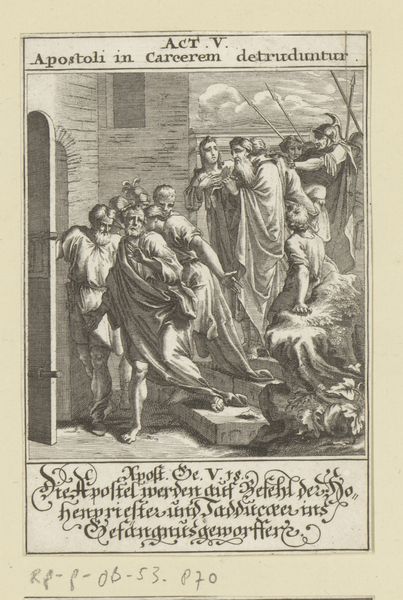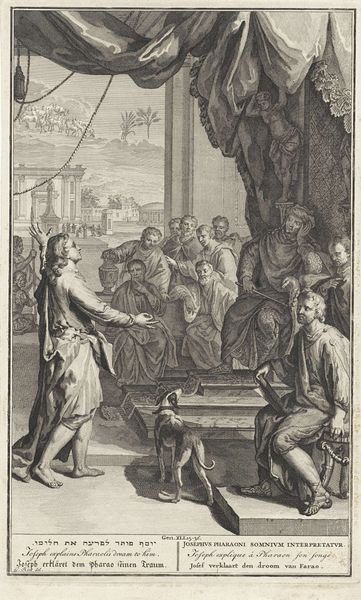
Dimensions: height 261 mm, width 204 mm
Copyright: Rijks Museum: Open Domain
Curator: Here we have "Christus bidt tot God," or "Christ Praying to God," an engraving made sometime between 1570 and 1600. It’s currently held here at the Rijksmuseum. Editor: The scene strikes me as intensely dramatic. The raking light, the contorted poses of the figures, there's a definite sense of the baroque at play. Curator: Indeed. It's interesting how Johann Sadeler I, the artist behind this print, employs a primarily linear approach to build up tonal variation. We can consider how each line acts as an individual unit that is collectively composing a more substantial image. Editor: Yes, look at the composition overall! The temple, positioned slightly off-center, creates a somewhat confined backdrop to a scene where social standing is so pronounced, marked both by light and proximity to what one can assume is Christ. Curator: Absolutely, there's a distinct layering of forms, wouldn't you agree? This effect emphasizes a very theatrical dynamism—note how the figures push toward the picture plane!—yet the artist still balances this movement with pockets of tranquility in the architectural setting. Editor: And isn’t this architectural setting suggesting of specific political undertones of religious display during this period? Look at the body language: these figures behind Jesus—some appear genuinely moved, others… perhaps are acting according to their prescribed roles within a socio-religious framework. Curator: Perhaps! As a print, it invites us to closely inspect its many fine lines—to discover subtleties of execution in service to conveying heightened, theatrical emotion. Editor: I find it fascinating to imagine how this engraving, intended for broad distribution, contributed to the formation of public perceptions around faith and authority. Its inherent accessibility enabled the Baroque drama to reach a wide audience. Curator: An incisive thought; Sadeler's print merges form and function beautifully—achieving powerful synthesis through precise and calculated visual means. Editor: Agreed! The convergence of technique and broader political motivations adds another level to our understanding of not just the engraving but to that of the historical context and production that it came from.
Comments
No comments
Be the first to comment and join the conversation on the ultimate creative platform.
